Bands and Envelopes
John Bollinger defines bands as moving lines built above and below a prescribed distance of a central region. It does not need to be symmetrical.
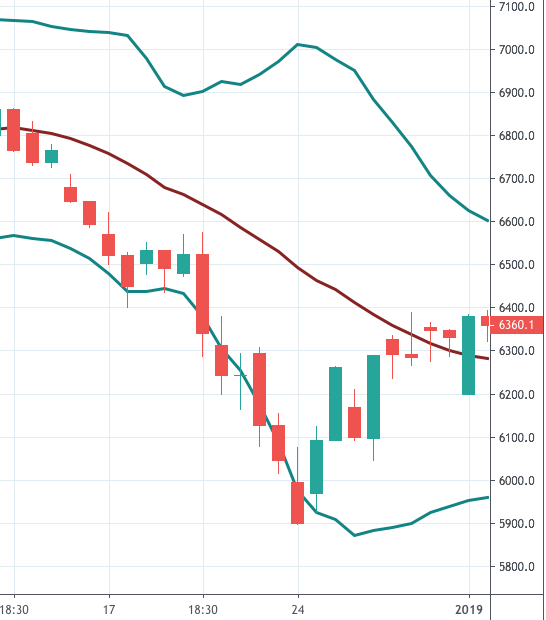 Figure 1 - A band is symmetrical to a central region
Figure 1 - A band is symmetrical to a central region
It is called Envelope when linked to the price with relative symmetry but without following a central reference -for example, moving average envelopes of highs and lows.
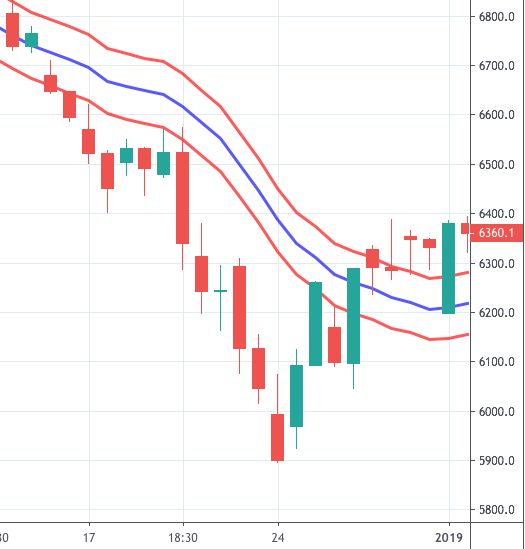
Figure 2 - An Envelope depict less central symmetry
Wilfrid LeDoux
John Bollinger assigned the earliest mention to a band or envelope to Wilfrid LeDoux in 1960. LeDoux copyrighted the Twin-Line Chart, two lines that connected monthly highs and monthly lows.
W. Keltner
Nearly at the same time, Chester W. Keltner in his 1960 book How to make money in commodities mentioned the Ten-Day Moving Average Rule. Keltner calculated what he called the typical price by taking the average of the High, Low and Close points (H+L+C)/3 and taking the 10-day moving average of the typical price as the centre line. That centre line would be projected above and below the centre line using the 10-period moving average of the daily range, as well.
Figure 3 - The Keltner Channel’s width grows as the trading range increases (click on it to enlarge)
Richard Donchian
Richard Donchian, also in that decade, took another approach. He let the markets determine its own bands using his four-week rule. A buy signal occurs if the price beats the 4-week high, and a sell signal if the price drops beneath the 4-week low. This 4-week rule can become envelopes if we connect the 4-week highs and the 4-week lows.
Figure 4 - Donchian Channel envelopes connecting the 20-bar highs and 20-bar lows (click on it to enlarge)
J.M. Hurst
In January 1970, J.M Hurst published The Profit Magic of Stock Transactions. Mr Hurst interest was on cycles, so in this book, he presented the “constant width curvilinear channels” to highlight the cyclic nature of the stock price changes.
Figure 5 - Mr Hurst concept of curvilinear channels to reveal the market cycles (click on it to enlarge)
Smith, Chaikin & Brogan
Ten years later, Tiger Software’s developer William Smith presented his black-box system: The Peerless Stock Market Timing. The PSMT used a percentage band employing moving averages.
Near at the same time, Marc Chaikin and Bob Brogan created the first adaptive band trading system, called Bomar Bands. Bomar Bands were conceived to include 85% of the price action over the last 12 months (250 periods).
Yim Yates
The concept of bands adapted to volatility was also used by Jim Yates in the early 80s, who conceived a system employing the Implied volatility from the options market: The Zone System.
The goal of the system was to determine if an asset was overbought or oversold according to the expectations set by price and volatility. Mr Yates confirmed that people could use implied volatility as part of their framework to make informed investment decisions. The framework consisted of six volatility-based zones, with a specific strategy to be executed in each one.
You can read here, a post published in 2007 by Jim Yates’ son, explaining this system, from an excerpt of his 1994 book The Yates Guide to Profitable Options Investing. Unhapily there is no chart available using this system.
John Bollinger
John Bollinger who was trading options at that time met Mr Yates. He took the basic Yates’ idea and devised a way to automate the width of the channel formed by Yates’ bands. To achieve it, Bollinger made the spread of the band dependent on the current average volatility. He perceived that volatility was directly linked to the standard deviation of prices and that this method would be a better way to form bands. He called them Bollinger bands.
Figure 6 - Price Chart with six bands at ±1, ±2, and ±3 standard deviations from the 20-period mean (click on it to enlarge)
In the next articles, we will expand the information on the most usual bands currently employed by traders and investors: Keltner Channels, Donchian Channels and Bollinger Bands.
References:
Bollinger on Bollinger Bands by John Bollinger, 2001.



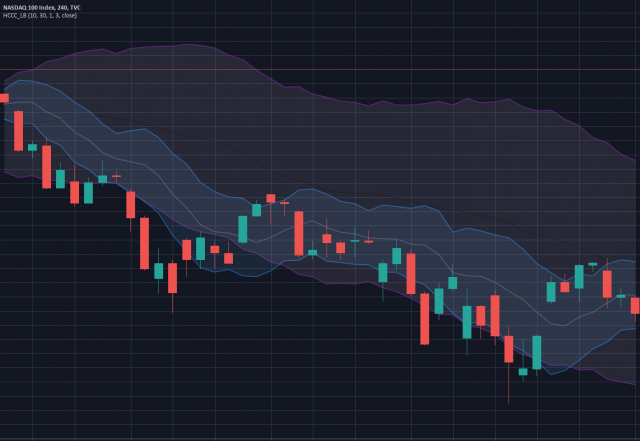
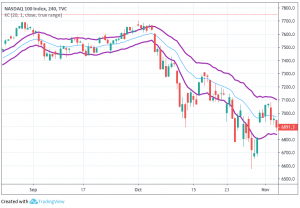
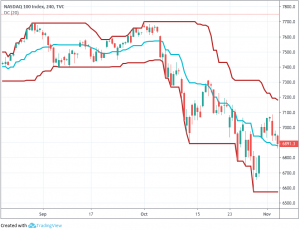
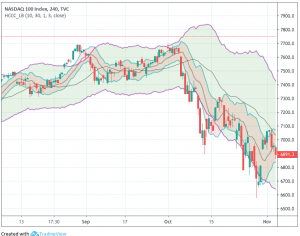
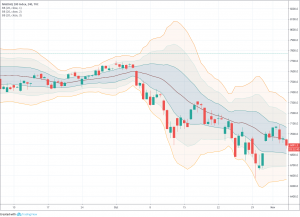


[…] we already saw in our previous article, we can create different types of bands that can be used in trading. The simplest is the moving […]